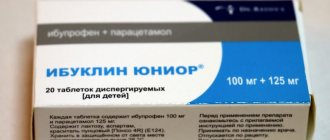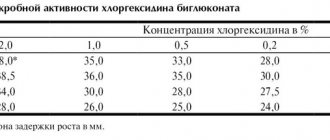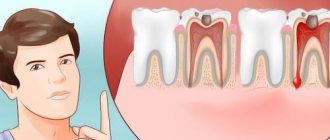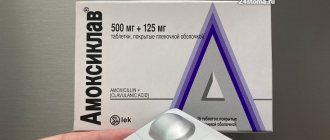- Three-stage pain correction system
- Types of painkillers
- How to relieve pain: a description of the stages of a three-step scheme
- How often does cancer pain occur?
- What is the reason for failure in pain treatment?
- Technologies for managing chronic pain syndromes
- Painkillers for stomach cancer
- Painkillers for lung cancer
Often the first and only symptom of cancer is pain. It causes suffering to the patient, reduces the quality of life, leads to depressive disorders, suicidal intentions and actions.
The fight against pain is a pressing problem in oncology. In order to effectively cope with pain, the doctor must correctly assess its causes, nature, and intensity.
At Euroonko, the area of pain medicine is very well developed. Our doctors use all available methods, including innovative ones.
Three-stage pain correction system
The main method of treating pain in oncology is drug therapy. In the practice of Euroonko, a three-stage pain relief system of non-narcotic and narcotic analgesics is used, which allows you to effectively relieve pain and keep it under control. We take into account the recommendations of the World Institute of Pain (FIPP WIP, USA), the European Federation of the International Association for the Study of Pain (EF IASP).
The method consists of sequential use of analgesics of increasing strength in combination with adjuvant therapy as the pain intensity increases. An important principle is to begin pharmacotherapy immediately when the first signs of pain appear, before a complex chain reaction develops that leads to chronic pain syndrome. The transition to a stronger painkiller is made when all the drugs of the previous step are ineffective in their maximum dosages.
Types of painkillers
Pain relief begins with the prescription of non-steroidal anti-inflammatory drugs (NSAIDs) in tablet form. These include Nurofen, Eferalgan, Nimesil, Diclofenac, etc. If they are ineffective, then at the second stage, combination drugs are prescribed to eliminate moderate pain. They include weak opiates and non-narcotic analgesics. Tramadol is most often prescribed from this group due to its effectiveness and ease of use. The third stage of pain therapy involves the prescription of narcotic analgesics, which help cope with even severe pain. These include buprenorphine, morphine, fentanyl, and omnopon.
Also, corticosteroids - preparations of adrenal hormones - are often used as analgesics. They have a powerful anti-inflammatory effect, especially important for pain caused by nerve compression, headaches caused by intracranial hypertension, and bone pain.
For each patient, medications are selected individually, so there is no universal scheme.
At any stage of pain therapy, analgesics must be taken regularly by the hour. The dose is adjusted taking into account the type and intensity of pain. If the drug becomes ineffective, it is advisable to replace it with an alternative drug of similar strength, but recommend it to the patient as more powerful.
Corticosteroids - preparations of adrenal hormones - are often used as analgesics. They have a powerful anti-inflammatory effect, especially important for pain caused by nerve compression, headaches caused by intracranial hypertension, and bone pain.
Anesthesiologist-resuscitator Vadim Sergeevich Soloviev about opioid analgesics:
Our doctors follow the principles of pain therapy proclaimed by WHO:
- “By mouth” (orally)
means that all injectable forms of analgesics should be excluded and therapy should be carried out using non-invasive dosage forms (tablets, capsules, syrups, transdermal therapeutic systems, rectal forms of drugs, etc.). - “On the clock”
- analgesics should be prescribed regularly according to the schedule, in accordance with the duration of the drug’s effect, without waiting for the development of severe pain, excluding the possibility of “breakthroughs” of pain. - “Ascending”
- the selection of drugs for pain relief is carried out from non-opioid analgesics for mild pain, “mild” opioids for moderate pain and strong opioid analgesics for severe pain, as the pain intensity increases, in accordance with the “WHO pain management ladder” - “Individual approach”
- implies the need for an “individual” selection of an analgesic and is based on the selective selection of the most effective analgesic in the required dose with the least side effects for each individual patient, taking into account the characteristics of his physical condition. - “With attention to detail”
- involves taking into account the characteristics and details of each patient, of course, prescribing co-analgesics and adjuvant agents as the need arises, and monitoring patients.
Painkillers and anti-inflammatory drugs
Pain is an integral part of our life. It is a kind of protective reaction that occurs in response to irritation of pain receptors, which are located in various organs and tissues. The appearance of pain indicates problems, serious diseases and pathological processes occurring latently in the body. It indicates what poses a threat to human health, helping to identify and eliminate the problem. Pain is an alarming signal that should never be ignored.
However, pain has not only positive, but also negative qualities. Whatever painful sensations a person experiences: nagging, sharp, pulsating or dull, they unsettle him, disrupting his usual way of life. Each of us, having barely felt the pain, strives to eliminate it as quickly as possible. But how to do that? How to remove pain of varying nature and intensity? Unfortunately, it is extremely difficult to cope with these unpleasant sensations on your own and, perhaps, only masters of self-control and yoga can do it. Other people have to resort to painkillers. Painkillers or analgesics are medications that relieve pain. Depending on the main active ingredient present in their composition and the form of release, they can affect the peripheral nervous system, brain, or have a local analgesic effect.
Very important! Painkillers do not cure! You've probably already heard that painkillers only eliminate pain without affecting the cause of the pain. In other words, with the help of analgesics you can only temporarily get rid of unpleasant sensations. A disease or other pathological process in the absence of proper drug treatment will continue to progress, exacerbating attacks of pain. Therefore, it is very important to immediately consult a doctor if you have persistent and severe pain of any origin!
Today, medicine offers a wide range of painkillers, presented in the form of ointment, powder, gel, drops, tablets and injection solution. You should choose an anesthetic based on the location of the pain and the cause that caused it. Let's look at an example. You hurt your arm and are now suffering from severe and excruciating pain. In order to eliminate pain in this situation, you need to use analgesics presented in the form of an ointment or gel (Finalgon, Lyoton, Nise-gel, etc.), since the cause of pain is local damage to the tissues and skin. If the pain does not disappear within 2–3 days, be sure to consult a doctor.
Based on their chemical nature and pharmacological properties, painkillers are divided into two main groups: non-narcotic and narcotic drugs.
Non-narcotic painkillers . They are analgesic drugs that do not have a significant effect on the central nervous system. This group of analgesics does not have a hypnotic or sedative effect and is not addictive. They are also called non-steroidal anti-inflammatory drugs because, in addition to their main action, they also help eliminate inflammatory processes. The most prominent representatives of this group of analgesic drugs include Analgin, Paracetamol, Ibuprofen, Voltaren, Naproxen, etc.
Narcotic pain pills . Narcotic analgesics are pain-relieving drugs whose principle of action is to inhibit the central nervous system. At the same time, other types of sensitivity remain at the same level: temperature, tactile, etc. This group of analgesic medications affects certain parts of the central nervous system, changing the “character” of pain. The complex effect of drugs on the centers of the cerebral cortex contributes to the development of a state of bliss and euphoria. With prolonged use of such medications, a person develops drug dependence.
As a rule, these medications are prescribed to reduce pain that occurs against the background of such serious diseases as myocardial infarction, malignant tumors, etc. Among the representatives of this group of drugs are Alfentanil, Buprenorphine, Butorphanol, Morphine and other drugs.
Recently, medications have been widely used that eliminate pain, but do not belong to the group of analgesics. We are talking about antispasmodics - medications that eliminate attacks of spastic pain. Such painful manifestations are the result of spasms of the smooth muscles of internal organs: the gastrointestinal tract, biliary system, and urinary tract. They often occur against the background of poor nutrition, chronic diseases of the gastrointestinal tract and other similar phenomena.
Taking antispasmodics in such situations is most effective when compared with conventional analgesics, since in order to eliminate pain it is necessary to first eliminate spasms of the smooth muscles of the internal organs. Medicines that relax smooth muscles include No-Shpa, Atropine, Papaverine, Buscopan, Spasmol, Drotaverine, etc.
How to relieve pain: a description of the stages of a three-step scheme
Low pain therapy
The patient is prescribed non-opioid analgesics: NSAIDs (Ibuprofen, Diclofenac, Ketoprofen, etc.), Paracetamol. When choosing a drug, the toxicity to the liver and kidneys inherent in all non-opioid analgesics, as well as the gastric toxicity of non-selective NSAIDs, and the risks from the cardiovascular system when using selective NSAIDs are taken into account. It is advisable to accompany the use of first-line drugs with adjuvant and symptomatic therapy: ion pump blockers, corticosteroids, antispasmodics, benzodiazepines, antihistamines, etc.
Therapy for “moderate” pain
The oral route of drug administration is preferred if the patient can take the drugs by mouth. For patients with mild to moderate pain in whom adequate pain control is not achieved by regular oral paracetamol or non-steroidal anti-inflammatory drugs, the addition of an opioid analgesic may provide effective pain relief without adverse side effects. As an alternative, low-dose opioid analgesics (eg, morphine, TTC fentanyl) may be used.
Therapy for “severe” pain
If the pain is intense and an opioid analgesic in combination with NSAIDs or Paracetamol is ineffective, therapy with strong opioid analgesics should be started. If they were prescribed for moderate pain, you need to increase the dose of the drug until it is effective. Registered prolonged forms of strong opioid analgesics in our country and used in our clinic are: morphine in capsules and tablets, TTC fentanyl.
Book a consultation 24 hours a day
+7+7+78
Pain relief: what is important to know
Pain relief: what is important to know
Pain management is an integral part of the treatment of cancer patients.
Currently, there are many drugs aimed at alleviating it or completely eliminating it. Most cancer patients experience the development of unpleasant or painful sensations at various stages of treatment, which, especially in the later stages of the disease, may require the use of potent pain medications, including opioid analgesics. The purpose of prescribing these drugs is not to treat the disease, but to improve the quality of life of patients and eliminate pain. Typically, the need to prescribe opioid drugs arises in cases where conventional painkillers (also called “non-steroidal anti-inflammatory drugs”) do not completely relieve pain and improve the patient’s condition. When used correctly, pain medications help the patient to significantly improve their daily activities and return to normal life. However, their use, especially if used incorrectly, may carry a risk of side effects that, in some cases, pose a threat to the patient's life.
If you experience severe pain, tell your doctor about it. Try to provide him with the most complete information regarding the severity of the pain, its duration and nature (constant pain or occasional pain), as well as what medications you are currently using to control the pain.
Possible side effects of taking opioid medications
Like any other medicine, strong painkillers can cause a number of side effects. A complete list of them is presented in the instructions for medical use; for this reason, before starting to use such drugs, you should definitely read the instructions. The most frequently observed side effects are:
Constipation
: occur due to suppression of intestinal motility, their development is observed in 90% of patients treated with opioid painkillers. For this reason, it is recommended to take laxatives during the entire period of pain management with opioid analgesics;
Nausea and vomiting
: most often develops in the first few days of therapy as a temporary side effect of painkillers. The duration of this side effect usually does not exceed 2 weeks. Antiemetic drugs are used to correct nausea and vomiting;
Drowsiness, weakness and dizziness
: Strong painkillers can have a negative effect on the central nervous system. The risk of developing these side effects is greater when you take other medications that cause drowsiness at the same time.
Ask your doctor about what measures you should take to prevent and manage side effects that occur. Take the drug in full accordance with the recommendations of your doctor. If the prescribed dose is not effective enough and you still feel pain, do not take an additional dose yourself - consult your doctor. If you experience side effects, you should report to your doctor, who may recommend that you change the frequency or dose of the drug, or replace it with an alternative medicine.
Interaction with other drugs
It is important to tell your healthcare provider about all the medications you take, especially those used to treat anxiety, insomnia, or seizures. The simultaneous use of opioid drugs and other drugs, especially those affecting the central nervous system, can dramatically increase the risk of side effects.
Storing painkillers
Painkillers should be kept out of the reach of children. If you have children at home, it may be useful to store them in a special lockable box. Accidental ingestion of an adult dose of an opioid analgesic by a child can result in severe overdose and death.
Difficulties in prescribing pain medications to cancer patients
Pain is a manifestation of cancer that cannot be tolerated and must be treated. Currently, federal and regional authorities are taking measures aimed at improving the availability of potent drugs for patients who need their prescription.
“Hotlines” have been opened on the territory of the Russian Federation to receive requests from citizens about violations of the procedure for prescribing and dispensing painkillers.
24-hour telephone number.
You can call the free 24/7 phone number from all regions of the Russian Federation. In addition, regional hotlines operate. It lists regional institutions where you can turn for help with pain relief, as well as hotline numbers and information about their operating hours.
Sources:
- Pharmacotherapy of chronic pain syndrome in adult patients when providing palliative care in inpatient and outpatient settings. Methodical recommendations ed. prof. Karpina A.D. Moscow, 2015.
- Ministry of Health of the Russian Federation. Pain management issues. Available at: .
- Portal “About palliative care”. Available at: .
How often does cancer pain occur?
Pain occurs in 30% of cancer patients who receive treatment and in 60–90% of patients due to disease progression. The main sources of cancer pain:
- cancer itself (45–90%);
- concomitant inflammatory reactions leading to spasm of smooth muscles (11–25%);
- pain in the area of the postoperative wound after surgery (5–16%);
- concomitant pathology, for example, joint damage, arthritis (6–11%), neuralgia (5–15%).
Cancer pain syndromes are grouped:
- According to the origin of the pain flow: visceral, somatic, neuropathic, psychogenic.
- According to qualitative subjective assessment: burning, stabbing, cutting, drilling, pulsating.
- By intensity: assessed using special scales.
- Duration: acute and chronic.
- By localization: abdominal, cardialgia, lumbodynia, muscle-articular and others.
Due to significant differences in the mechanisms of pain, there is no universal analgesic to relieve all types of pain syndromes. Treatment should always be individualized.
Get rid of pain
What is the reason for failure in pain treatment?
Due to the lack of specialized training in pain management, even among oncologists, and due to the perception of cancer as an incurable disease, even medical specialists often do not realize that cancer pain can be managed.
In 80–90% of patients, pain can be completely eliminated, and in the rest, its intensity can be significantly reduced. To do this, the doctor needs to take into account each of the sources and mechanisms of pain to select adequate pain therapy for cancer.
In clinical practice, we constantly encounter typical errors in the treatment of pain: unreasonably early prescription of narcotic analgesics, use of excessive dosages of drugs, non-compliance with the prescription regimen of analgesics.
Technologies for managing chronic pain syndromes
Euroonko is equipped with all the necessary equipment, including individual wearable pumps and devices for dosed administration. The clinic has the licenses and permits required by the legislation of the Russian Federation. We have a well-equipped pain therapy department staffed by physicians who specialize in pain medicine.
Use the quick links to find out about the pain relief method you are interested in:
- Pain relieving patches
- Spinal anesthesia
- Epidural anesthesia
- Catheterization techniques
- Neurolysis through the gastrointestinal tract using endosonography
- Injection of drugs into myofascial trigger points
- Fascial blocks and nerve and plexus blocks
- Radiofrequency ablation
- Neurosurgical interventions
- Patient controlled analgesia (PCA)
Pain relief for stage 4 cancer can significantly improve the patient’s quality of life, reduce, and in most cases prevent suffering. This helps to give the terminally ill patient additional time during which he can actively communicate with family and friends and spend the last days of his life without painful symptoms.
Pain relieving patches
This is a method of transdermal administration of the drug. The patch contains four layers: a protective polyester film, a reservoir with the active substance (for example, fentanyl), a membrane that adjusts the release intensity and an adhesive layer. The patch can be applied anywhere. Fentanyl is released gradually over 3 days. The effect begins within 12 hours; after removal, the concentration of the drug in the blood slowly decreases. The dosage may be different, it is selected individually. The patch is prescribed, as a rule, at the very beginning of the third stage of pain relief for oncology.
Spinal anesthesia
During spinal anesthesia, the medicine is injected into the spinal canal, subarachnoidally. This leads to a temporary “switching off” of tactile and pain sensitivity. The introduction requires a certain amount of experience from the doctor. Local anesthetics and opioid analgesics are used as pain relievers. The effect is long lasting and pronounced. Mainly used for surgical interventions, for acute, unbearable pain, it has a number of side effects on the cardiovascular and respiratory systems.
Sign up for a consultation now
Epidural anesthesia
A more gentle method compared to the previous one. The medicine is injected into the space where the spinal nerves form. The drugs are similar to spinal anesthesia. Epidural anesthesia is used for long-term pain relief when oral and parenteral methods of administration no longer provide results.
Catheterization techniques
Catheterization techniques allow for long-term, high-quality pain relief. The introduction of port systems into the epidural and subarachnoid space with the use of local, narcotic and adjuvant drugs allows for long-term relief from pain and reduces the use of other analgesics that have their own side effects.
Neurolysis through the gastrointestinal tract using endosonography
Neurolysis (neurolysis) is the process of destruction of the nociceptive (pain) nerve pathway.
One of the most effective methods is neurolysis of the celiac (solar) plexus
, which is located in the retroperitoneal space in the upper abdomen and innervates the abdominal organs: stomach, liver, biliary tract, pancreas, spleen, kidneys, adrenal glands, large and small intestines to the splenic flexure.
The analgesic is administered transgastrically - through the gastrointestinal tract; accuracy is ensured by endoscopic ultrasound control. Such methods of local anesthesia are used, for example, for pancreatic cancer with an effectiveness of up to 90%
. The analgesic effect can last for more than several months, while narcotic analgesics would have to be administered continuously using the classical method.
Injection of drugs into myofascial trigger points
Myofascial pain syndrome is expressed in muscle spasm and the appearance of painful lumps in tense muscles. These are called trigger points and are painful when pressed. Injections into the trigger zone relieve pain and improve mobility of the body area. The purpose of trigger point injections is to “break” the pain cycle of pain-spasm-pain. They successfully treat spasms of many muscle groups, especially in the arms, legs, lumbar region and neck, and head. Often used as adjunctive therapy for fibromyalgia and tension headaches.
Fascial blocks and nerve and plexus blocks
The same qualitative effect is provided by fascial blockades and blockades of nerves and plexuses.
A nerve or plexus block involves injecting a drug near the nerve that connects to the affected organ and causes pain. Peripheral blockade procedures are performed by experienced specialists using ultrasound navigation, which allows for more precise administration of the analgesic drug to the required location without affecting or damaging the nerve structures.
The use of hormonal drugs during blockade can eliminate pain for a long time, and repeated blockade can eliminate pain for several months
. Depending on the type of anesthetic, the procedure is carried out once a year, once every six months or every week. Another plus is the minimal number of negative consequences.
Radiofrequency ablation
This technology is based on selective thermocoagulation of certain nerves with special electrodes. The affected area is carefully controlled, allowing very small areas to be treated without damaging nearby motor and sensory nerves. Recovery after the procedure occurs very quickly and with almost no consequences, which allows the patient to return to normal life.
The procedure can be performed without hospitalization. Radiofrequency destruction gives a long-lasting effect that can last up to a year or more
.
The incidence of complications and side effects is very low. If the pain returns, treatment may be repeated.
Write to an oncologist
Patients with obvious mental disorders, with secondary pain or drug addiction are an unsuitable population for neurodestructive manipulations. Such patients may continue to complain of pain even if the procedure is successful. The patient must have a realistic view of the outcome of treatment. He must understand that the goal is to reduce pain, not completely eliminate it.
a diagnostic blockade is required.
. A good effect of a diagnostic blockade can predict a satisfactory result of neurodestruction. However, the same diagnostic block must be repeated at least one more time, even if the pain relief was significant, to negate the placebo effect.
If the result is not entirely clear, differential blocking should be used. In patients with widespread or multilocal pain, the outcome of treatment usually does not meet expectations. The patient should be aware that targeting one area may not achieve the desired effect and may require additional destruction to achieve maximum pain relief.
Euroonco doctors talk about radiofrequency ablation:
The procedure should be avoided on mixed nerves as it may result in loss of skin sensation and muscle weakness. Deafferentation pain can be aggravated by destruction of the damaged nerve. When pain is of central origin (spinal or higher), peripheral nerve destruction may cause an increase in pain perception due to the elimination of incoming stimulus. The best alternative in this case is neuroaugmentation with TENS or spinal cord stimulation.
Neurosurgical interventions
During the procedure, the neurosurgeon cuts the spinal or cranial nerve roots through which the nerve fibers pass. Thus, the brain is deprived of the ability to receive pain signals. Cutting the roots does not lead to loss of motor ability, but may complicate it.
Patient controlled analgesia (PCA)
This type of pain relief is based on a simple rule: the patient receives analgesics when he wants it. The scheme is based on individual perception of pain and the need to take analgesics. In European countries, RSA has been accepted as the standard for postoperative pain management. The method is simple and relatively safe
. However, patients must be thoroughly instructed.
PCA is most effective when using catheter methods (epidural, spinal anesthesia, nerve plexus block with catheter installation), as well as port systems, both venous and epidural and intrathecal.
Painkillers
Author, editor and medical expert – Petrashevich Anna Aleksandrovna.
Number of views: 11 158
Last updated date: 12/20/2021
Average reading time: 3 minutes
Pain is a feeling familiar to each of us. The International Association for the Study of Pain defines it as “an unpleasant sensory and emotional experience associated with actual or potential tissue damage or described in terms of such damage”1.
Pain not only brings discomfort, but also negatively affects the quality of life. To alleviate the condition, adequate therapy and effective painkillers are necessary2. Therefore, scientists are striving to create new and improve existing drugs aimed at suppressing painful sensations2.
Acute pain is a protective reaction of the body that occurs in response to damage. Such a signal focuses our attention on the affected area and forces us to handle it with extreme caution. If the impairment of functionality is minor, then the painful sensations are temporary and disappear as healing occurs. Typically this period lasts no more than 3 months1. However, if the pain does not stop longer, then it can be considered chronic1.
About 20% of people worldwide suffer from chronic pain3. Of the total number of patients who come to doctors, 15% complain of pain of various types3. Moreover, the first place in frequency is occupied by headaches (up to 90%) and pain of the musculoskeletal system4.
The main way to relieve pain in a short period of time is the use of medications. The following pharmacological groups have an analgesic effect4:
- analgesics (including narcotics);
- non-steroidal anti-inflammatory drugs (NSAIDs, NSAIDs);
- antispasmodics;
- anticholinergics;
- local anesthetics4.
NSAIDs are the most commonly prescribed medications for pain6. According to some estimates, more than 30 million people worldwide are forced to take these drugs on an ongoing basis, and 300 million periodically (of which 200 million purchase drugs without a prescription)6.
Medicines in this group are widely used to relieve headaches, dental and menstrual pain, as well as pain in the lower back and post-operative pain7. Nonsteroidal drugs are used not only to relieve pain, but also to reduce fever in adults and children7.
Modern NSAIDs include Motrin®, an over-the-counter drug based on naproxen with anti-inflammatory, analgesic and antipyretic effects9. Motrin® is available in tablet form and is intended for adults and children over 15 years of age9. The active ingredient naproxen helps fight even severe and prolonged pain10.
Before taking the medicine, you should read the instructions. Please note that the drug is not recommended for use as a pain reliever for more than 5 days without consulting a doctor9. Do not forget that pain is one of the signs of pathology. In attempts to suppress the pain syndrome, a person only masks the symptoms of the disease, wasting time that could be spent on healing.
Uncontrolled consumption of painkillers can cause serious side effects on the digestive system (the appearance of erosions, ulcers and bleeding), heart and blood vessels (increased risk of heart attacks and strokes)8.
Only a doctor can prescribe painkillers in the dose and for the period that the patient needs, taking into account his age, body characteristics, diagnosis and the presence of concomitant diseases.
The information in this article is for reference only and does not replace professional advice from a doctor. To make a diagnosis and prescribe treatment, consult a qualified specialist.
Literature
- The interaction of pain and sleep in clinical practice. Poluektov M. G., Shuvakhina N. A., Lamkova I. A. RMJ. 2022. T. 27. No. 9. P. 56-60.
- A modern approach to eliminating pain. Tibilov T., Tlekhusezh M. Scientific review. Pedagogical sciences. 2022. No. 4-4. pp. 90-92.
- Chronic pain as a symptom or a disease: the IASP Classification of Chronic Pain for the International Classification of Diseases (ICD-11). Treede R.D., Rief W., Barke A. et al. Pain. 2019; 160(1): 19–27.
- The role of painkillers: on the way to overcoming pain. Shopabaeva A.R., Serikbaeva E.A., Lataeva E.H. Bulletin of the Kazakh National Medical University. 2022. No. 4. pp. 257-258.
- Modern medicines. Burbello, A. T. - St. Petersburg: Neva Publishing House, 2008. - 864 p.
- Clinical pharmacology of non-steroidal anti-inflammatory drugs. Ignatov Yu. D., Kukes V. G., Mazurov V. I. - M.: GEOTAR-Media, 2010. - 256 p.
- Ibuprofen in the treatment of neurogenic pain syndromes. Tabeeva G. R. - Consilium Medicum. 2006; 8 (2): 28–32.
- Some features of the prescription and use of painkillers. Mikaelyan M. F., Andreeva I. N., Aleynikova E. I. International Journal of Experimental Education. 2013. 11-1. pp. 199-200.
- Instructions for use of the drug Motrin®
- Karateev A. E. Naproxen: a universal analgesic with minimal risk of cardiovascular complications. Modern rheumatology. 2016;10(2):70–77.
Painkillers for stomach cancer
About 70% of patients suffering from stomach cancer experience discomfort and pain. As a rule, pain is localized in the abdomen, but as the tumor progresses it can also occur in other places: in the back, ribs, bones. Neuropathic pain may occur as a symptom of paraneoplastic syndrome or a side effect of chemotherapy.
In addition to the three-step system, benzodiazepines, antidepressants, adrenal hormones (prednisolone, dexamethasone), sleeping pills, and antipsychotics are used to combat pain and discomfort in stomach cancer. For bone pain and pathological fractures, bisphosphonates are prescribed.
The doctor can perform two types of nerve blocks:
- Celiac plexus block
helps relieve pain in the upper abdomen. The conduction of pain impulses through the nerves of the stomach, liver, pancreas, gall bladder, intestines, and kidneys is blocked. - Hypogastric plexus block
helps relieve pain in the lower abdomen. During it, the nerves of the lower intestine, bladder, testicles, penis, prostate, uterus, ovaries, and vagina are blocked.
Plexus blocks can be performed using anesthetics and drugs that temporarily damage the nerves. With neurolysis, a drug is administered that destroys the plexus.
Painkillers for lung cancer
The cause of chest pain due to lung cancer can be the tumor itself or a surgical procedure. Other possible reasons:
- Metastases in the brain lead to headaches.
- Metastases of the abdominal organs lead to abdominal pain.
- Metastases in the bones lead to bone pain and pathological fractures.
- Paraneoplastic syndrome leads to neuropathic pain in different parts of the body.
- Pain is one of the side effects of chemotherapy.
In addition to pain-relieving injections for lung cancer with NSAIDs and narcotic analgesics, other drugs, nerve blocks, radiation therapy, and palliative surgical interventions help.
Book a consultation 24 hours a day
+7+7+78
About drugs
Any physical suffering leads to a person’s desire to get rid of it as soon as possible. For this reason, the patient’s course is a nearby pharmacy, where he looks for a medicine that can quickly and effectively relieve this kind of torment. But he faces the problem of a wide range of products. Today there are so many medications that sometimes it takes a lot of time to find the right one.
Medicines are mainly divided into two groups:
- non-narcotic;
- narcotic.
The latter include morphine and codeine. They are generally considered opioid drugs.
Medicines are the main helpers in the fight against discomfort
Narcotic types of drugs can be found in pharmacies under the following names:
- "Ethylmorphine";
- "Nabulfin";
- "Omnopon";
- "Morphilong";
- "Promedol";
- "Tramadol".
Medicines are most often produced in the following forms:
- tinctures;
- ointments;
- gels;
- solutions for injections;
- plasters.
The most convenient form for medications is tablets. Their advantages are the following:
- ease of use;
- no reactions from the body (no redness or itching);
- no need for syringes;
- It is not necessary to ask for help from qualified personnel (than when administering injections).
The anesthesia procedure is an obligatory part of the treatment. This is how partial or complete recovery from pain occurs. Its implementation depends on the cause of the pain and its severity. If the cause is any disease, then pain relief during complex stages of the disease is vital. If the tablets are ineffective, injections are prescribed - intramuscular or intravenous.
Analgesics help make life easier
So, in medicine, there are many different types of pain medications.








